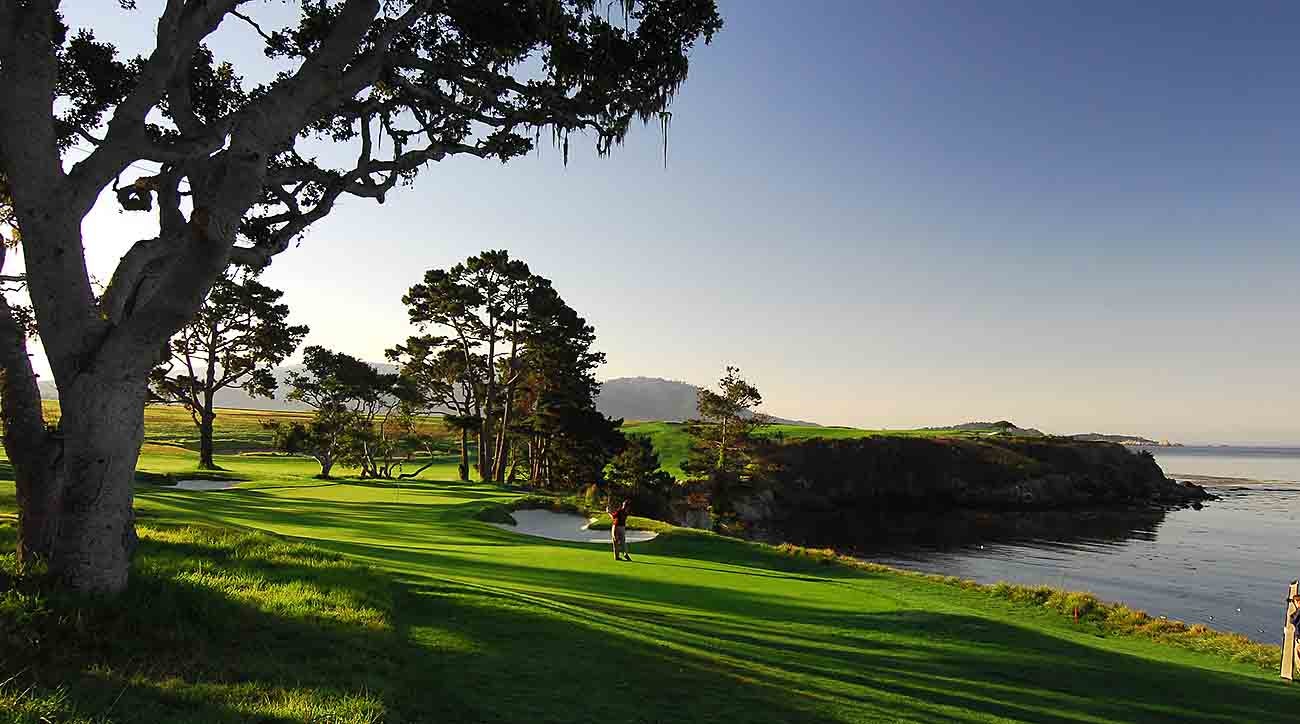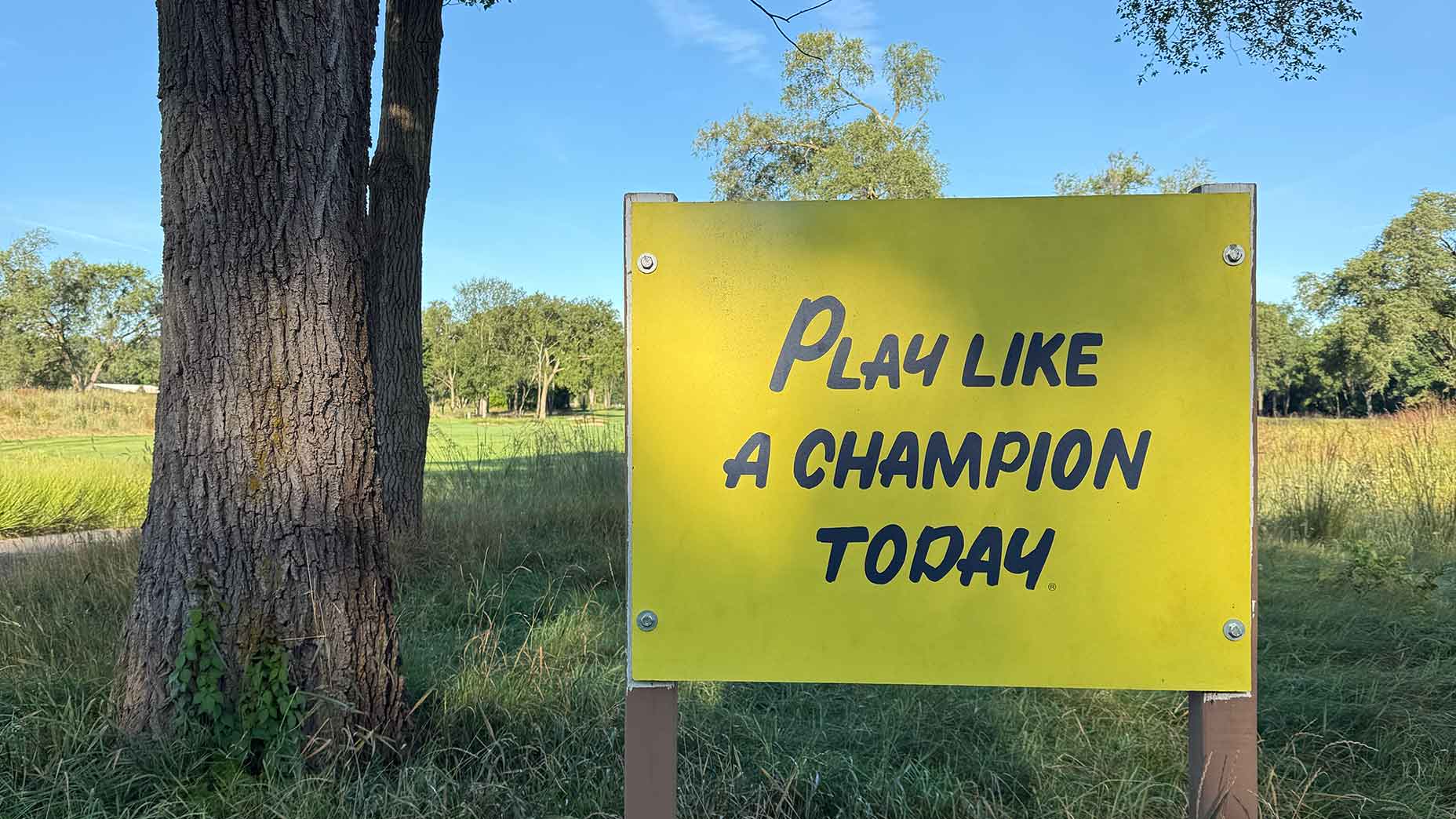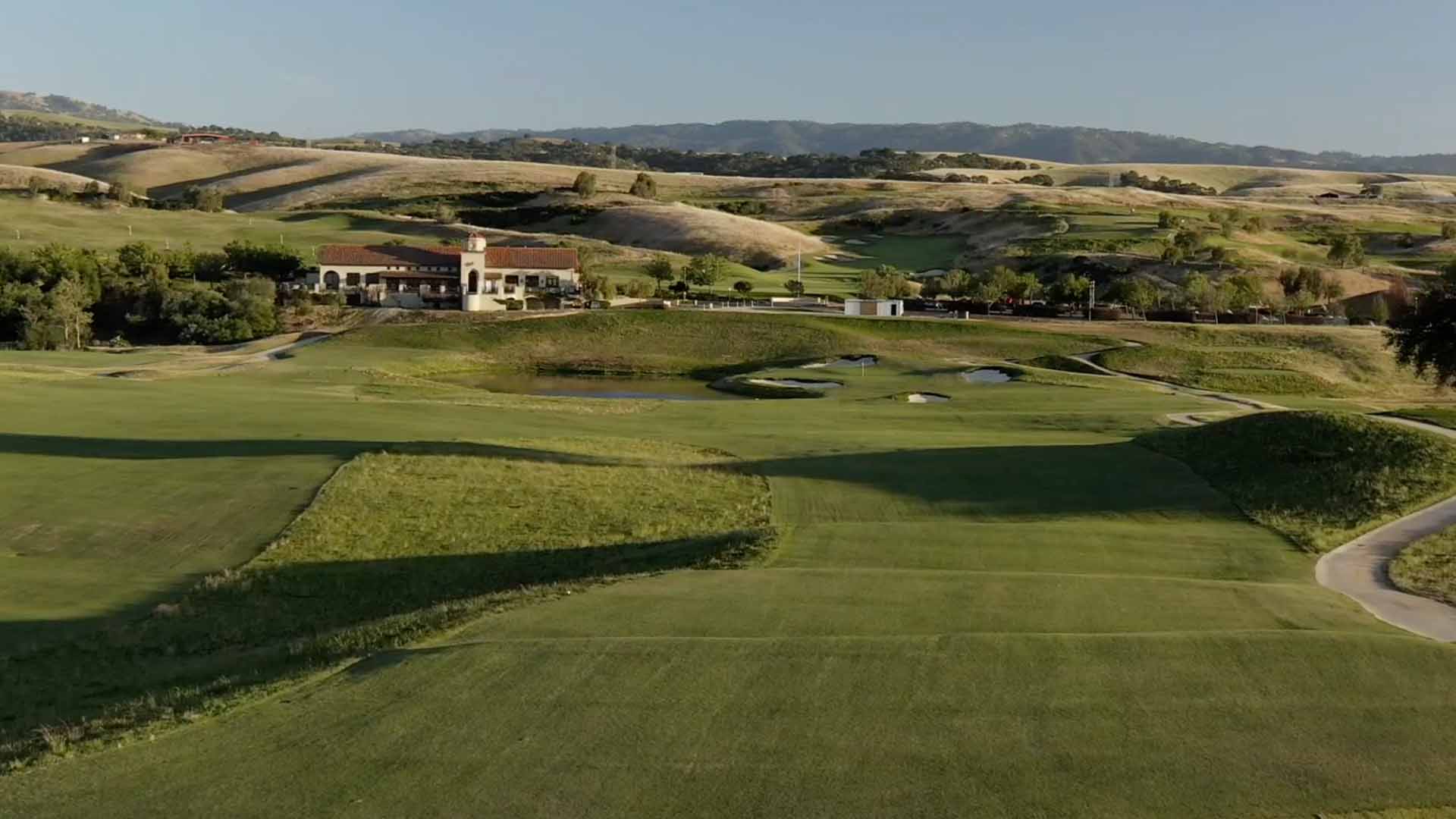GOLF’s Top 100 course panelists are among the most respected and well-traveled course evaluators in the game. They’re also keen to share their opinions. In this new GOLF.com series, we’ll be granting them anonymity and turning to them for their unvarnished views on all questions course-related. The goal is not only to entertain you but also to give you a better understanding of how GOLF’s panelists assess courses. With the Tour wrapping up at Riviera Country Club last week, we’ve asked our experts for their takes on a couple of Riviera’s most famous holes, and the one Top 100 course they would love to play every day.
Meet our panel:
– Panelist No. 1: Panelist since 1983; has played 70 of the current World Top 100
– Panelist No. 2: Panelist since 2013; has played 48 of the current World Top 100
– Panelist No. 3: Panelist since 2004; has played 91 of the current World Top 100
– Panelist No. 4: Panelist since 2003; veteran course designer, has played 60 of the current World Top 100
– Panelist No. 5: Panelist since 2013; has played 56 of the current World Top 100
– Panelist No. 6: Panelist since 2007; has played 69 of the current Top 100
1. This past week, the PGA Tour stopped at Riviera, which is ranked number 32 on GOLF’s World Top 100. Which course on GOLF’s World Top 100 list would you most want to play every day and why?
Panelist 1: My favorite course to play every day would be Sunningdale GC in Surrey England. (Old or New they are equal in my eyes; I might even prefer the New.) Cypress Point would be my other choice but it’s so spectacular it would be like having dessert every day. Sunningdale is an old club that has kept improving over the years. To start with, it is always a lovely walk. The heathland courses seem to provide a surface that puts a spring in your step. When the course is wet, it adds lots of yardage and when it’s dry the ball can run for miles (usually into the heather). Standing on the 1st tee on an early spring morning, I can hear the P.G. Wodehouse quote: “It was a morning when all of nature seemed to shout ‘Fore!'”
Panelist 2: Cypress Point. Nothing comes close for quality of the site with three distinct environments (pines; dunes; unmatched rocky oceanfront), and I love the fact that it breaks all the standard scorecard “rules” with back-to-back par-5s and par-3s and uneven nines. It’s also relatively short. I’ll admit a bias as the course was my introduction to golf when I spent my youth as a caddie there. My first love.

Panelist 3: Cypress Point. Beautifully set on the coast amid scrub and pines in a perfect golfing climate. Little daily play leaves it perpetually in top condition. The variety of the inland holes, where it can be warm and sunny, lead to the closing coastal holes which are often fog shrouded and breezy. There is no more dramatic walk in golf than that through the trees from the 15th green to the ocean-side 16th tee where the green, set upon the cliffs, looms out of the fog. Varied, challenging, always changing, memorable, and sublime.
Panelist 4: Firstly playing golf everyday sounds pretty cool. I’d take that and play a course I liked, never mind loved! But if you press me to pick just one and I can play every day then I want one that changes every day, and that has to be a true links course. Choices, choices… Dornoch, County Down, Pacific Dunes, Tara iti, Royal Melbourne, shoot me I can’t decide.
Panelist 5: No doubt that this would be Cypress Point. In its own league, pure and simple. However, since I reside in Europe, I have to say that driving through the gate in the morning mist and playing the Le Grand Parcours at Morfontaine, having lunch and finishing with nine holes on The Valliére in the afternoon is just magical.
Panelist 6: The courses that I have historically wanted to play every day for the rest of my life would be the ultra challenging courses of Carnoustie, Royal Melbourne, Oakmont, and Muirfield. But now that I am losing my edge, I want to play North Berwick because it is the most fun golf course in the world! So many of the classic green structures originated here, and the meandering stone walls that need to be navigated make this a truly special and memorable Scottish golf experience. The iconic 16th green and finally finishing right back into town next to the clubhouse, etc., make it so interesting. A big plus is the short course next to the Marine Hotel in which I could eventually teach my grandchildren how to play! This place has it all!
2. Speaking of Riviera, it’s home to what some have called the greatest short par-4 (the 10th) in the world. Does it qualify as that for you? Any other holes that match or exceed it in that category?
Panelist 1: The 10th hole is certainly one of the best short par-4s in the world. I just love watching the Tour players work out where to hit it depending on where the flag is. Such a narrow green really adds to the difficulty. Jay Moorish, who worked with Tom Weiskopf, liked to build a short par-4 on the courses they designed. The best I have seen is the 14th at Loch Lomond.
Panelist 2: No. I understand the allure of the tee shot, the massive fairway bunker and the option of different angles of attack. I also like the punishment of a shot leaked right and short-sided. My issue is that, given the extremely small size of the green, there is the need for an alternate green to accept the amount of play that would otherwise leave a green with poor (or no) turf.
The hole should only be discussed for its merits as a great hole if you also mention the need for the overflow 2nd green to handle the amount of play. Debate the hole as an optional green design or not at all. This green, however, never is discussed or even mentioned in the debate. I can name many short 4s that are better and rely on a single green surface and factor in wear and tear issues, while still providing plenty of options on pins. The 10th at Riviera is one of the most “group-thinked” holes to reach “greatest” status with little understanding of the fact that a hole is played over 365 days, and not just during tournament week.
Panelist 3: I don’t know of a better short par-4 than Riviera’s 10th, although Oakmont’s 17th, National Golf Links’ 1st, the Old Course’s 12th, and Cypress Point’s 8th (which can play like a Cape Hole) are top-notch as well. A great short par-4 always presents the player strategic choices off the tee. Interestingly, Riviera’s 10th continually tempts the pros to hit a heroic shot, yet the reward does not equal the risk.
The green is canted away from the line of play off the tee, surrounded by bunkers, and a shot only 10 yards off line can wind up in nasty kikuyu rough or amongst the shrubs. Someone who spent the week laying up with a mid-iron to the far left of the fairway, gaining the perfect angle for a short pitch into the bowling pin-shaped green, will probably score one or two strokes lower for the week than the player who tries to drive the green every day. Perhaps its siren song, which lures pros every year away from their course-management instincts, is what makes Riviera’s 10th so special.
Panelist 4: The drivable par-4 has made a strong return to favor in golf architecture circles. I have done at least one on every course I’ve created for over a decade. What I have learned is that the risk has to be somewhat in balance with the reward or, better put, the threat can’t outweigh the opportunity. When the threat is too high, we end up with the first pass at the remodeled 12th at TPC Sawgrass, where the players quickly figured out the juice wasn’t worth the squeeze and laid up routinely, and where’s the thrill in that?! Riviera’s 10th is a great balance; last year over half the field went for it but less than half copped out. That alone tells you the balance is great. Of those who went for it, 1 in 5 made birdie. Of those who wimped out, only 1 in 10 made birdie. Fortune favors the bold and the spectators can’t get enough of it!
Panelist 5: It’s special and one of the best short par-4s, no doubt. The strategic options and the balance between going for it and laying up is spot on. New players to this game can make birdie here and the top pros can make bogey or worse here (Jordan Spieth made an 8). That indicates the quality in the design. Perhaps the fact that it’s the 10th hole in the flow of the round also has an impact. For some, this is the moment for a “new” start to the round and for most of us, keeping the driver/3-wood in the bag on the tee is one of the unique parts of the mental side of golf. Comparing it is tough since the top short par-4s have their own unique character. I always joke and say that the best short par-4 in the world is the par-3 16th at Cypress Point.
Panelist 6: Short par-4s are the most fun holes in golf. We play the game because it is supposed to be fun and challenging. I do believe that Riviera’s 10th is a great short par-4. A great hole doesn’t require a beautiful setting or view in order to be considered great. It is the most talked about hole on the course during the telecasts. Why? Because it provides the most options to the players. It frustrates and confounds golfers with the “What if?” All of these second-guessing conversations occur in the bar following a round.
Oakmont’s 17th is great for similar reasons. It gives the player at least five different options off the tee, with no water, trees or out-of-bounds to contend with. The attack depends on various weather conditions (wind), course conditions (hard greens), pin placement, and most importantly the status late in the round of the match or position in a medal play competition.
For the same reasons listed above, I also believe that Cypress Point’s 16th would be a better par-4 than a par-3 if they could move the tee back just a little farther. Sand Hill’s 7th and Cypress Point’s 8th are very similar. I just love these two holes. The caddies will recommend one player to hit a driver off the tee while the same caddy will recommend a different strategy to his other player. That’s awesome and shows the value of a truly great caddy. I also love the short “Pit Hole” on the back nine at North Berwick with the wall guarding the front of the green; it is so much fun!

3. Another notable hole at Riviera, the par-3 6th, has a bunker in the middle of its green. On a gimmicky-to-great scale of 1-10, 10 being the greatest, where does that feature fall for you? A few words of explanation, please.
Panelist 1: It rates as a 5. I view it just like a severe slope on a green, just to be avoided. Not something to be copied but OK one time here.
Panelist 2: Because it is Riviera and done under the hand of George Thomas, who can do no wrong and is immune to criticism, probably a 7. If an architect like me did something like it in Asia, it would be labeled a 1. It would be much better if they allowed all players all year to take out a wedge and leave a divot, not just during tournament week. Another hole that treats everyday players differently from Tour players.
Panelist 3: I think 7 is about fair. If you are in the bunker, it plays like a greenside bunker. The key is the green slopes steeply from top left to bottom right so that if the bunker is between you and the hole, you can usually putt along the inward sloping sides of the green, which will carry most putts around the bunker and reasonably close to the hole. [Nicklaus at Dismal River tried to emulate the bunker-in-the-middle-of-the-green. His mistake was to construct a flattish green so a player has trouble even seeing a back flag from the tee much less putting around it.]
Panelist 4: Love it! Eight. Golf as an art, as a puzzle, has over 100 years become less adventurous not more so. Here we see a bold design feature that works, otherwise it would have been nixed long ago. The secret is the attention to detail the architect put into the putting surface. I have stood on that green and tried to putt to a pin from all over the green, around that bunker, and it seems possible. That’s a hoot and I challenge anyone to say otherwise!
Panelist 5: It’s up there for me. Perhaps even an 8/10. Golf sometimes needs a bit of quirkiness and as long as it works, I’m all for it and more of it please! It works because the green is shaped to make it work and this just makes it fun and memorable. I am sure that most visitors will hit an extra putt or two just for the fun of it. Thumbs up!
Panelist 6: I rate it as a 7 on a scale of good holes. I don’t think it is “gimmicky.” On the “gimmicky” scale I rate it as a 2. I love interesting, unique, memorable holes that require the golfer to think his way around the hole/course. There are lots of options on not only the tee shot but subsequent shots. Once again, people will always remember this hole and talk about it over a few beers and will want another chance at playing it.






